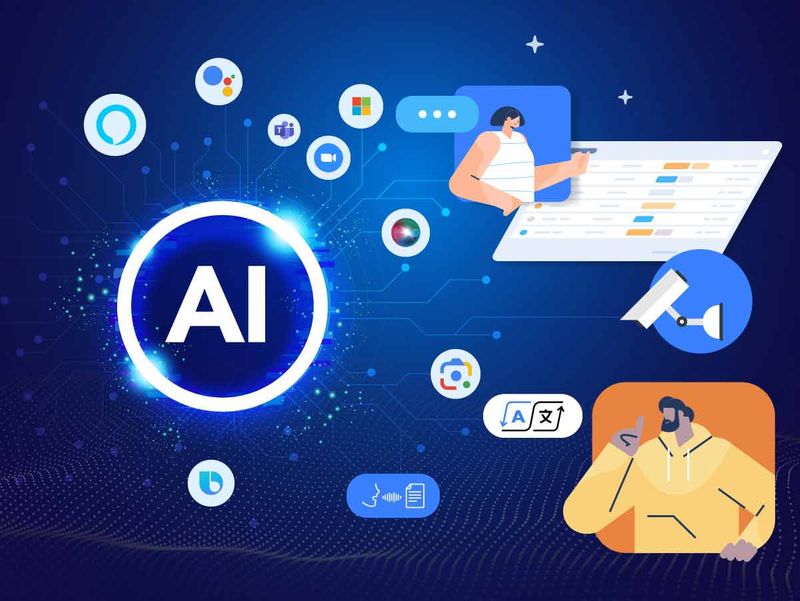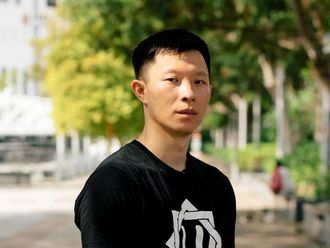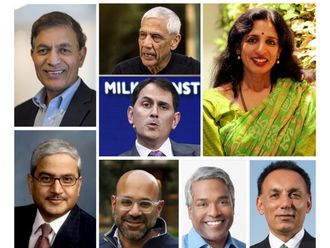
Artificial Intelligence (AI) has been a topic that has enamoured mankind for years. It is a complex and powerful topic and holds great potential as well as many pitfalls. We know it has the power to revolutionise our lives but at the same time, we are also quite apprehensive about an intelligence outside of our brains.
The history of AI began with the advent of computing in the 1950s although, at the initial stages, the aim was just to create machines that simulate human intelligence. Scientists developed systems that could mimic the problem-solving skills of humans but they were severely handicapped by the limited computing power the technology of that time offered. It was also prohibitively costly – in the 1950s, the cost of leasing a computer was as much as $200,000 a month.
The move gathered momentum in the 90s as machine learning and neural networks began to emerge. Algorithms that could learn from data and adapt to new information led to advancements in pattern recognition and natural language processing. Big data and advanced computation power caused a surge in AI front post-2000. Most recently, breakthroughs in Deep Learning (DL) further revolutionised the AI scene. Deep Learning neural networks with multiple layers started to excel in heavy tasks like image recognition, language translation, etc.
For decades, AI technology has been active beneath the surface and indeed was the backbone of the many technologies we have been using, including Google search and Gmail, but it caught the imagination of the public and the industry in the wildest imaginable way with the public release of Chat GPT. Suddenly, the science fiction world of an intelligence outside of the human brain seemed closer than ever, if not already there. One by one, AI advancements in various technology fronts began to be unveiled to the excitement and concern of the general public, scientists and lawmakers. It is evident that AI will get more integrated into society and will change the way we are living, perhaps irrevocably.
Let us take a look at how AI products in different areas are redefining our lives today.

AI in personal devices
Smartphones and virtual assistants
AI on phones and virtual assistants has transformed how we interact with our devices, offering convenient voice interactions to advanced camera features. A host of apps and tools in our mobile phones and personal devices are already harnessing the power of AI to make out life easier.
1. Voice Assistants
These AI-powered virtual assistants can understand natural language commands and provide adequate responses, making hands-free interactions convenient.
Example: Siri, Google Assistant, Cortana and Alexa
2. Speech Recognition
AI-driven speech recognition enables accurate transcription of spoken words, facilitating voice-to-text functionality and voice search.
Example: Virtual assistants like Siri, Google Assistant and Alexa
3. Image Recognition
AI power helps smartphones to categorise photos, detect objects, and even assist visually impaired users.
Example: Google Lens, CamFind, BioID, Flow, LeafSnap, Calorie Mama
4. Smart Camera
AI enhances smartphone cameras with features like portrait mode for artistic shots and night mode for better low-light photography.
Example: Microsoft Pix, Photoshop camera, Picai, Focos, Halide, Spectre-AI
5. Language Translation
AI-driven language translation apps help users communicate across language barriers, making travel and global interactions more accessible.
Example: Google Translate, Microsoft Translator, Yandex Translate, DeepL, Translator
6. Voice-to-text messaging
AI converts voice messages into text, making it easier for users to communicate quickly and discreetly through text-based messaging.
Example: Google Assistant, Speechnote, DragonAnywhere, Transcribe
7. Email management
AI powers email management by suggesting smart replies. It also improves productivity by categorising messages based on relevance.
Example: Gmail, Smart Reply, Priority Inbox
8. Virtual note-taking
AI enhances virtual meetings by providing real-time transcriptions and reducing background noise, ensuring speed, ease of use and authenticity to the records.
Example: Zoom, Teams, Otter, Fireflies
9. Personal Assistants
Some AI-powered assistants can perform tasks like setting reminders, making reservations, and scheduling appointments, saving time for users.
Example: Clara, Samsung Bixby, Google Duplex (Discontinued)
AI-powered smart home devices

AI-powered smart home devices offer convenience, automation, and enhanced security, making them essential to modern households. These include smart speakers, virtual assistants, lighting systems, thermostats and security cameras.
Smart speakers with virtual assistants
AI smart speakers come with built-in virtual assistants that respond to voice commands, control smart home devices, answer questions, and offer various skills and services.
Example: Amazon Echo and Alexa, Google Nest Hub, Apple Homepod
Smart lighting systems
Smart lighting systems have two components: Smart bulbs and smart switches. Smart bulbs handle three activities: dimming, temperature-changing and colour-changing. AI-powered lighting systems allow users to control and automate lights, adjust colour and brightness, and set schedules through voice commands or smartphone apps.
Example: Helvar, Philips Hue Smart Lighting System, LIFX Smart Bulbs
Smart thermostats
Such smart thermostats learn household habits to optimise heating and cooling schedules, leading to energy savings and improved comfort.
Example: Ecobee smart thermostat, Nest learning thermostat
Smart security cameras
Capable of motion detection and face recognition to identify people, animals, and vehicles, offering real-time alerts and remote monitoring.
Example: Ring video doorbell, Arlo Pro 4, Nest cam IQ
Smart smoke and carbon monoxide alarms
These use machine learning to differentiate between false alarms and real threats, providing timely alerts and notifications.
Example: Nest Protect, First Alert Onelink Safe & Sound
Wearable tech and fitness trackers
With advanced sensors and machine learning capabilities, AI-powered wearables offer personalised insights and real-time feedback to help users stay on top of their well-being.
Here are some AI-powered wearable devices and fitness trackers:
Some smartwatches and fitness trackers
Apple Watch series: Advanced health and fitness tracking capabilities with personalised coaching and heart rhythm analysis.
Fitbit Sense: Stress management tools and skin temperature sensor, ECG scan and workout tracker for overall well-being insights.
Garmin Venu 2/2S/plus: Sleep tracking, Body energy monitoring, and pulse oximeter for comprehensive fitness tracking.
Health and performance optimisation
Whoop Strap 4.0: Heart rate variability monitoring and real-time strain optimisation for athletic performance.
Biostrap: Personalised insights on sleep, recovery, and daily activities for maintaining a healthy lifestyle.
Lumen metabolism tracker: AI-based metabolism analysis for personalised nutrition and fitness recommendations.
Wellness and sleep tracking
Oura Ring: Smart ring offering personalised sleep and activity insights for optimal routines.
Amazfit Bip U Pro: Stress monitoring, sleep analysis, and blood oxygen level tracking for comprehensive health insights.
Muse S Headband: AI-powered meditation and sleep tracker with real-time brain activity feedback for relaxation.
Personalised fitness coaching:
Moov Now/HR: Real-time audio coaching during workouts for optimisation and enhanced performance.
AI in healthcare
Of the two broad types of AI, predictive and generative, the former is more valuable in medicine, say some experts. Predictive AI uses mathematical models that use patterns from the past to predict the future. This has revolutionised medical diagnostics and imaging by enhancing accuracy and efficiency, and early intervention. For example, researchers at Mount Sinai Health System, New York, have developed an AI algorithm that can predict the onset of sepsis hours before clinical symptoms appear.
Researchers at UK's NIHR (National Institute for Health and Care Research) have shown that an easy-to-use smart stethoscope could detect heart failure in primary care, Guardian has reported. The AI-supported stethoscope identified people with heart failure correctly nine out of 10 times.
AI is also seen to be more efficient in predicting lung cancer earlier than the existing methodologies. Studies have found that AI can help determine whether the abnormal cells seen on a CT scan are cancerous or not. Different types of AIs used on different cases predicted cancer more accurately than the standard Brock score, which is used to rate the probability that a lung module will be diagnosed as cancer within in 2-4 year period.
According to some reports, Mayo Clinic has created more than 160 AI algorithms in cardiology, neurology, radiology, and other specialities, forty of which have already been deployed in patient care.
Medical diagnostics and imaging
Machine learning algorithms analyse medical data to identify patterns and aid in early disease detection. For instance, AI-powered systems can interpret medical images like X-rays and MRIs, assisting radiologists in identifying anomalies. PathAI, a startup, uses AI to analyse pathology slides and detect cancerous cells with high precision. Google’s Deep Mind has developed an AI model that can accurately detect eye diseases like diabetic retinopathy from retina scans.
Studies have also found that AI in breast cancer screening is safe and can reduce the workload of radiologists by almost half.
Analysing large volumes of medical data to quickly derive a more accurate diagnosis has been made possible with the use of AI tools. Enlitic, an imaging AI developer, uses AI to review medical images and provide automated findings.
Drug discovery and personalised medicine
AI has changed the field of drug discovery by speeding up the identification of potential drug candidates and optimising the drug development process. AI algorithms and tools are increasingly used in virtual screening, predicting drug-drug interactions, drug repurposing, toxicity prediction and clinical trial optimisation.
IBM's Watson Health utilises AI to analyse medical records and suggest personalised treatment options for patients, showcasing the potential of AI in medical decision-making.
AI in remote patient monitoring
Many AI devices can help remotely monitor patients and provide providing accurate, real-time data to healthcare professionals.
These include:
Vital sign monitors: AI-powered vital sign monitors track a patient's heart rate, blood pressure, temperature, and other key health indicators, enabling timely interventions.
Wearable health trackers: Wearable devices like smartwatches and fitness bands equipped with AI can continuously monitor heart rate, sleep patterns, and activity levels, and even detect irregularities that might indicate health issues.
Smart pill dispensers: AI-enabled pill dispensers remind patients to take their medications, dispense the right doses, and can alert healthcare providers if doses are missed.
Remote ECG monitors: These devices record and transmit a patient's ECG data to doctors for analysis, helping in the early detection of cardiac abnormalities.
Respiratory monitors: AI-driven respiratory monitors help manage conditions like asthma and chronic obstructive pulmonary disease (COPD) by tracking lung function and alerting both patients and doctors to changes.
Fall detection systems: These systems use AI to detect falls in elderly patients and automatically alert caregivers or emergency services for prompt assistance.
AI in transportation
The application of AI in transportation continues to evolve rapidly, and its impact on safety, efficiency, and sustainability within the industry is likely to grow in the coming years.
Autonomous vehicles
AI plays a central role in developing self-driving cars and other autonomous vehicles. These systems use sensors, cameras, and advanced algorithms to perceive the environment, make decisions, and safely navigate roads without human intervention.
Example: Tesla Autopilot, Waymo of Google-self driving car project, Cruise Origin by General Motors, Aurora Driver, and Neuro R2
Traffic management
AI is utilised to optimise traffic flow and manage congestion in urban areas. AI algorithms can analyse real-time traffic data from cameras, sensors, and GPS devices to predict and alleviate traffic jams.
Example: SiTraffic Concert from Siemens Mobility, Streetlytics from Citilabs, Optima from PTV Group,
Predictive maintenance
AI is employed to monitor the health of vehicles and transportation infrastructure. By analysing data from sensors and components, AI can predict when maintenance is required, helping to prevent breakdowns and reduce downtime.
Example: IBM IoT for automotive, Honeywell Forge for airlines, Railnova for rail operators
Ride-hailing and routing
AI-driven algorithms power ride-hailing platforms, determining the best routes and matching riders with drivers efficiently.
Example: Uber, Lyft (US and Canada), Didi Chuxing (China) and Ola (India)
Public transit optimisation
AI is used to optimise public transit schedules and routes, considering factors such as passenger demand, traffic patterns, and weather conditions to provide more efficient and reliable services.
Example: Moveit, Optibus, TransitScreen, Swiftly and Trafi
Freight and logistics
AI is applied to optimise the logistics and supply chain operations in transportation. It helps with route planning, cargo tracking, warehouse management, and demand forecasting.
Example: Flexport, ClearMetal, FourKites, Convoy and Loadsmart
Smart infrastructure
AI is used to manage smart transportation infrastructure, such as adaptive traffic signals that adjust timing based on real-time traffic conditions. Other areas include building energy management, water management, smart street lighting and predictive maintenance of infrastructure.
Example: Siemens, ABB, Cisco, Honeywell, Ericsson and Schneider Electric.
Predicting accidents and incidents
AI systems can analyse historical data and patterns to predict potential accidents or transportation-related incidents, enabling proactive safety measures.
Example: Fleet Complete, Mobileye, Netradyne, NoTraffic and Verizon Connect.
Customer service and experience
AI-powered chatbots and virtual assistants are used to provide customer support in transportation services, addressing queries and resolving issues.
Example: Lyft, Skiplagged, Amelia, Satisfi Labs.
Security and surveillance
AI is applied in transportation security to enhance surveillance and threat detection at airports, train stations, and other critical infrastructure.
Example: BriefCam, Hikvision, Qognify, Bosch Security systems
Energy efficiency
AI is utilised to optimise energy consumption in electric vehicles and transportation systems, maximizing their efficiency and reducing carbon emissions.
Example: Companies like Tesla, BMW, Ford and Wymo by Google – all are using AI to optimise energy use in their vehicles.
AI in Communication
AI enhances communication by providing more natural and efficient interactions, personalizing content and experiences, and automating repetitive tasks, thereby saving time and improving productivity. AI is used in various aspects of communication to improve efficiency, personalization, and user experience. Here are some ways AI is employed in communication:
Natural language processing (NLP): AI-powered NLP technology enables machines to understand and interpret human language. This capability is used in virtual assistants, chatbots, and voice recognition systems to interact with users more naturally and effectively.
Chatbots and virtual assistants: AI-driven chatbots and virtual assistants are integrated into websites, messaging apps, and customer service platforms to provide instant responses to queries and offer personalised support, thus enhancing communication between businesses and customers.
Sentiment analysis: AI algorithms can analyse text or speech to determine the sentiment or emotions of the speaker or writer. This technology is used to gauge customer feedback and sentiment on social media, reviews, and other communication channels.
Speech recognition: AI-powered speech recognition systems can convert spoken language into written text. This technology is used in voice-controlled devices, transcription services, and voice assistants.
Machine translation: AI is used in language translation tools to automatically translate text or speech from one language to another, facilitating multilingual communication and breaking down language barriers.
Personalised marketing and content: AI is employed to analyse user data and behaviour to deliver personalised marketing messages and content. This helps businesses tailor their communication to individual preferences and interests.
Email filtering: AI algorithms can analyse email content and metadata to filter out spam and prioritise important emails in users' inboxes, improving overall communication efficiency.
Predictive texting: AI is integrated into messaging apps and keyboards to provide predictive text suggestions, making communication faster and more efficient.
Voice assistants for smart homes: AI-powered voice assistants allow users to control smart home devices through natural language commands, enabling seamless communication between users and their smart devices.
Content generation: AI is used to generate content, such as news articles, reports, and product descriptions, based on data analysis and predefined templates.
Speech synthesis: AI-driven speech synthesis, or text-to-speech technology, converts written text into spoken words. This is used in various applications, including audiobooks, navigation systems, and accessibility tools.
AI in Education
AI has helped address some major challenges in education with innovative teaching and learning practices. Besides rectifying flaws in teaching methods, AI, with the help of remote learning, has paved the way for round-the-clock digital classrooms providing instant solutions.
Personalised learning and adaptive systems
Each student is different in terms of speed of learning, depth of knowledge, lived experiences and other reference points. In a classroom, a teacher cannot tailor lessons for each student, but artificial intelligence can. AI tools allow for a personalised approach based on a student’s level of knowledge and intelligence. It analyses a student’s previous learning experiences and identifies weaknesses to provide lessons or solutions suitable for each student. Even the goals set for each are different simply because their capabilities are dissimilar. Basically, AI adapts the teaching material based on a student’s requirement: this is personalised learning.
Example: Queirum and Carnegie Learning’s Platforms, Duolingo, Khan Academy, DreamBox, Coursera
AI tutors and virtual classrooms
AI chatbots are tutors available 24/7 and provide solutions to students swiftly. Technically, it becomes a one-on-one teaching session at any time of the day (Eg: Plaito). That becomes a virtual classroom. The feedback too is almost instant, with AI tools (eg: Century Tech) speeding up the learning process. Each student has a different way of learning, and AI systems can decipher a student’s learning style and provide support accordingly.
Example: Squirrel AI, CogniFit, ScribeSense, Google Classroom, Blackboard Learn, Microsoft Teams Education
AI in grading and assessment
Grading papers and other administrative work are repetitive tasks. Assessing learning patterns can be time-consuming. An Osfted survey in London’s The Daily Telegraph newspaper said: teachers spend 31 per cent of their time planning lessons, grading tests and doing administrative work. AI tools could easily automate these processes, allowing tutors to focus more on teaching.
Example: Zipgrade, Extempore, VidGrid, GradeCam, FastBridge, Gradescope
AI in finance and r-commerce
In finance, AI can help personalise services and products, create opportunities, manage risk and fraud, enable transparency and compliance, automate operations and reduce costs. In eCommerce, AI uses algorithms and software to improve the efficiency of operations by improving customer service, personalising the shopping experience, enhancing cybersecurity, predicting market trends and automating repetitive tasks.
AI-powered financial advisory services
AI is used to forecast pricing and market moves. A financial adviser who employs AI technologies (eg: Michael and Jarvis Invest) can provide better advice as it can pull out the relevant financial facts, present them clearly, provide data-driven insights and recommend several options. AI technology helps financial advisers better understand their client’s requirements and preferences and offer tailored investment solutions that suit their financial goals. This will improve cost efficiency and provide better returns for clients.
Example: Weatherfront, Acorns, Betterment, Hedgeable, Ellevist
Algorithmic trading and market analysis
In algorithmic trading, AI-based computers trade without human intervention. AI programs (eg: Trade Ideas and TrendSpider) follow a set of instructions to place a trade to generate profits at a speed and frequency that is impossible for a human trader. According to Investopedia, the instructions are based on timing, price, quantity, or any mathematical model.
AI-powered market research tools (eg: Crayon and Awario) can provide timely and accurate insights into market trends, consumer behaviour and competition. These tools can help make informed decisions faster while reducing costs and minimising errors. They can identify new market opportunities and emerging trends based on data.
Fraud detection and security
AI and ML (Machine Learning) play a critical role in online fraud detection in transactions, such as credit cards, banking or e-commerce. These technologies (eg: Splunk and Simility) analyse large amounts of data and detect patterns and anomalies that may indicate fraudulent activities such as payment fraud, identity theft or phishing attacks. AI-based solutions (eg: Kount) can also integrate with other security systems, such as identity verification and biometric authentication, to provide a more comprehensive approach to fraud prevention, a report on the Cointelegraph website said.
Personalised shopping recommendations
Personalised shopping is tailoring shopping experiences to a customer’s preferences, needs, and behaviour. AI tools allow for personalised communication (eg: Klaviyo), product recommendations, targeted advertisements and customised pricing (eg: Prisync). This is made easier with AI, which uses data to identify patterns and predict a customer’s preferences and behaviours. And it helps businesses to cater to the tastes of individual customers in real-time.
AI and entertainment
How is AI used in music and art generation?
AI-crafted music and art are gaining attention, igniting a discourse about their potential as an industry's future or transient phenomenon.
AI in music
With new digital tools emerging all the time, the Music Institute cites the upsides of AI-driven music: it could potentially streamline the creative process, allowing artists to focus more on the quality of their work (rather than the quantity), having the ability to personalise the listening experience.
Ways AI helps create music
Composition: AI algorithms, neural networks and deep learning models can analyse huge volumes of musical data and understand the patterns found in various musical genres, and use them to produce chunks of melodies or harmonies, or even produce full musical scores.
Music arrangement: AI also helps with musical arrangements by recommending instruments, chord progressions, and orchestration based on the composition's style and genre.
Music curation: AI is used to curate personalised playlists, and sound recommendations, based on user preferences and historical data. This helps users discover new music that aligns with their tastes.
Musical inspiration: This ability to arrange and recommend can be especially beneficial for composers and arrangers who are seeking fresh inspiration or are experiencing creative obstacles.
Examples of AI-based composer apps: OpenAI's MuseNet, AIVA (Artificial Intelligence Virtual Artist), Amper Music, Google's Magenta Project, IBM Watson Beat, AideR, Ecrett Music, Humtap, Bandlab
AI in art
The emerging field of AI-generated art is kicking up excitement — and concern. AI art generators work by using machine learning algorithms (based on big data of paintings, drawings and other art) and deep-learning techniques, to create new artwork.
There are several ways AI is utilised in art generation:
Artistic image generation: Generative adversarial networks (GANs), in particular, may produce art by producing new images based on training data. AI-generated graphics can serve as both a starting point and an inspiration for artists.
Style transfer: AI algorithms are capable of transferring the aesthetics of one piece of art onto another.
Text-to-art
AI can translate textual descriptions or prompts into visual art.
Example: CM3leon is “trained” to achieve state-of-the-art performance for text-to-image generation.
Interactive art: Interactive artworks and installations powered by AI encourage audience interaction. The AI analyses spectator input and responds — in real-time — to produce dynamic and immersive art experiences.
Creative tools
AI Colorizer, for example, turns black-and-white photos into coloured images. Digital painting and illustration can be aided by AI-powered brushes.
Art curation: AI-based algorithms help artists discover new art and recommend exhibits within a certain geographical, for example.
Collaborative art
AI can “cooperate” with human artists to complete a piece jointly.
AI's potential in music/art sparks creativity vs. authorship debate. Concerns arise over AI's capacity to supplant human artists. It is important to balance AI's creative power and human uniqueness.
AI in recommendation systems for movies and TV shows
A recommendation system is an artificial intelligence (AI) program, typically linked to machine learning, that leverages big data to advise or promote more items to customers, according to the NVIDIA glossary.
It checks subscriber behaviour and identifies trends and patterns in their decision-making. For instance, the recommendation algorithm can suggest the same TV show to you if many people have watched a specific action movie again.
YouTube's recommendation process, for example, examines your viewing patterns, matches them with similar users, and proposes relevant content. Signals like watch history, searches, subscriptions, location, and time impact suggestions, enhancing local relevancy.
AI in video games and virtual reality
In video games, AI is utilised to develop non-player characters (NPCs, made to resemble real players) who act in imaginative and clever ways, resulting in dynamic and individualised experiences. The AI algorithms that control them permit them to react and adjust to their environment. In virtual reality (VR) games, one or more camera inputs can be used to provide motion-tracking information using AI. This enables the user's perspective and the VR or AR experience to merge seamlessly. A lot of VR and AR games use AI to create levels, characters, and game mechanics. Example: the game "Dungeon Alchemist" uses AI to create characters and game locations. Another: An Nvidia team created a bot in within the popular online game Minecraft, called Voyager, that uses GPT-4 to solve problems inside the game. The development of 3D scenes from a single photograph is another AI study.
AI-powered surveillance systems
AI helps with a smart analysis of potential dangers. Additionally, it may spot possible criminals by observing how customers walk throughout a store. It can also come up with methods to locate lost objects and bags in public places, including airports. If seen on CCTV, AI-based deep learning can also aid in crime-solving. AI for video surveillance uses computer software programs to analyse the audio and visual data from surveillance cameras, aided by behavioural analytics in active environments. With AI-driven video analytics, anomalies can be detected in less than a second, thus helping in human decision-making.
Biometrics and facial recognition
AI can greatly enhance security. In the UAE, facial recognition is used instead of the national ID.
Facial recognition and biometrics can be used for routine purposes, including unlocking gadgets, confirming identities, and boosting security. Deep learning (DL) and machine learning (ML) are now popular among manufacturers for face analysis, which facilitates easier and more accurate identification in the field of face recognition.
How AI enhances authentication
Companies are increasingly skipping the passwords and verifying users with biometric authentication, which uses AI to confirm a user's identity on any device through a selfie, fingerprint, or voice recognition. DL and ML also help improve the "false acceptance ratio” (statistical measure to determine the probability of a biometric security system allowing unauthorised user access) across various demographic groups.
AI - Trend and impact
AI's surge in popular culture extends to music, transforming creation, marketing, distribution and beyond. It’s been used in healthcare, surveillance systems. This trend carries benefits and obstacles. While it promises innovation, ethical and legal concerns arise. Responsible use is vital for an authentic, innovative AI revolution, considering the potential human impact.










